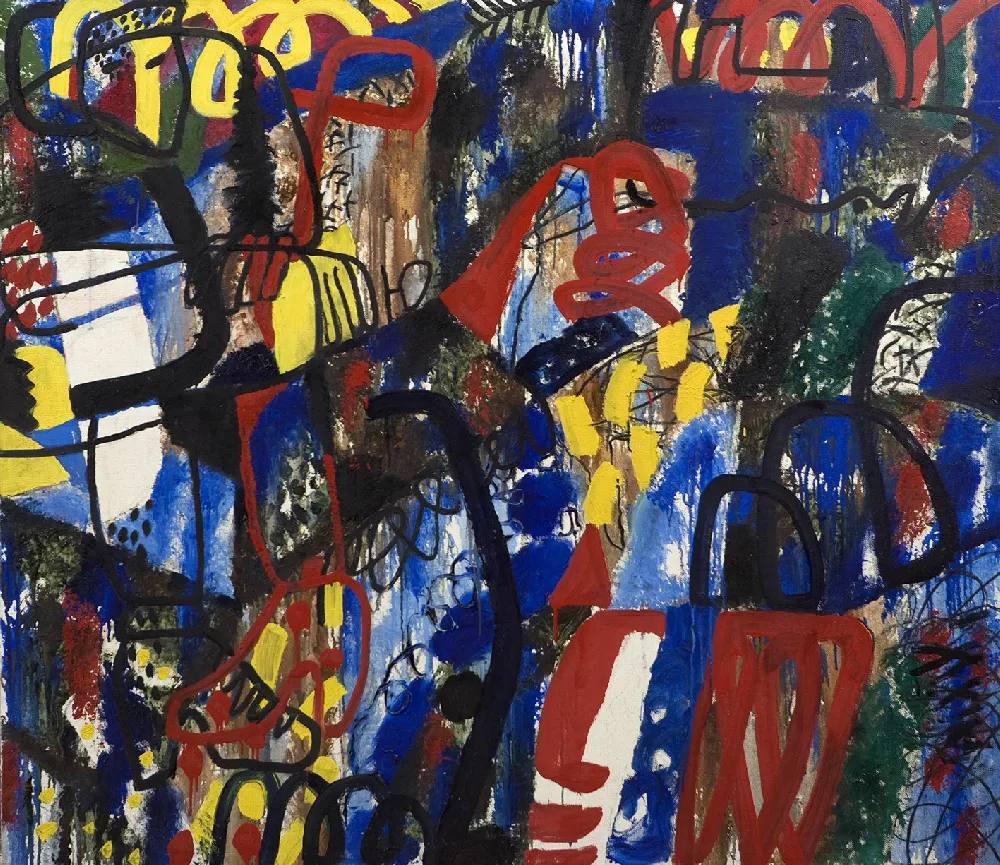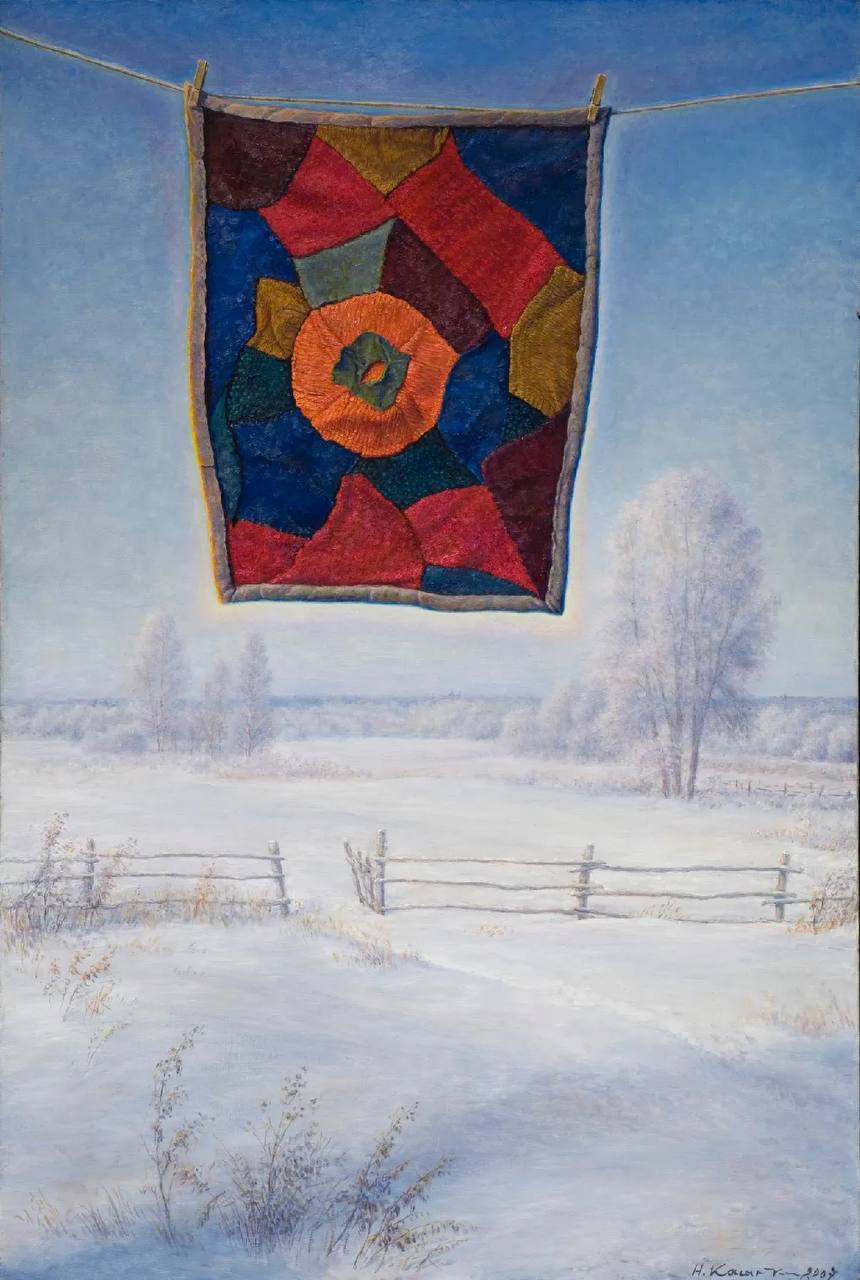
The beginning of the path
My collection began in 1992, when I was 16 years old. At that time I was still a schoolkid, but I had already become interested in art. My father started buying the first artworks. Some communication between a circle of artists began, which I also decided to join. For both my father and me, the purchase of artworks was more the result of a chance or a lucky meeting rather than a meaningful choice.
At that time I worked for my brother. His company was engaged in the sale of video products. I was worked part-time because I also studied at school, then at the institute, but I received good money for the early 90s anyway: about $100 a day. On average, the work of an established but not widely known artist cost $30-50, a maximum of $100. For $100 you could buy huge good paintings.
I spent money very irrationally. In short, we used to buy complete bullshit and super unworthy things. I don't even want to mention the names of these artists because they need to be forgotten, not remembered. In the beginning everyone has bad taste and no one understands what to spend money on. The same problem arises today, and it stops a lot of people from buying things. But at that time we didn't know what to focus on: there were no galleries, there was nowhere to get information from — and now there is an opportunity to seek an advice. In any decent gallery you will be guided for money or even for free. Just by googling "100 best artists of Russia" you will get an access to qualified and very well-selected information.
The first important artists
When I started doing art more professionally, I gradually began to come across interesting information, and I began to get acquainted with really good artists, who would became important later. The first meeting of this kind was a meeting with Oleg Lang in early 1993. Until his death in 2013, we’d never stopped our communication. I had a lot of respect for him as an artist, and we still show Oleg Lang's legacy in the gallery.

Oleg Lang. Painting 96. 1996. Oil on canvas. 130 x 150 cm. From the private collection of Sergey and Olga Popov
By 1993 I had already established myself as an art critic and wrote texts for the newspaper "Moscow Artist". At that time this small newspaper was one of the few art related publishers. I had to write an article about Oleg Lang, we met, began to talk, and he gave me his artwork as a present. That time it was a common thing to do: no one paid money for articles, and the art critic wrote if he wanted, and the artist, if he wanted, could give him an artwork.
The first painting by Oleg Lang turned out to be a gift to me, but the following ones I purchased. So a big part of my collection began to form like this. In the mid-90s I also started to talk with Dima Kavarga and Alexey Kallima. I consider them important artists for my generation, and I’m very glad that I was there at the beginning of their practice: I acquired Dima's early artworks, watched Alexey's first experiments with interest after he arrived in Moscow.
Gallery owner and collector
I’d call myself primarily a gallerist and art critic, not a collector. Now my collection is formed of artworks of artists with whom my pop/off/art gallery works. I really appreciate them all, although I don't collect them consistently.
The status of a gallery owner imposes certain obligations, but gives opportunities. Sometimes there’re situations when you, as a gallery owner, can help your artist (or even better to call it "must" help), and in this case you buy an artwork on some special conditions. Sometimes you can skillfully dispose of money, because you get artworks by your painters for much cheaper. In addition, you have a preferential right to buy a thing, being the first person who sees it.
I’ve repeatedly used this right in relation to the artists of the pop/off/art gallery, and therefore in my collection I have a lot of them. But as I think they are absolutely outstanding, it doesn’t bother me in any way.

Vitaly Pushnitsky. House of Black Palettes. 2017 Oil on canvas. 60 x 50 cm. From the collection of Sergey and Olga Popov
For example, there is such a preponderance in the direction of Oleg Lang and Vitaly Pushnitsky. I rate Vitaly as one of the most important artists in contemporary Russian art, so I have always sought to buy his artworks from each new series. Now I can't afford it, because they’ve become very expensive, but I still buy his artworks, including on the secondary market. Sometimes pieces of art become cheaper in the secondary market than in the primary one.
What defines a collection
The word "collection" comes from the Latin collectio, and this term has the meaning of "structuring something, distributing it on certain shelves in a certain way." We can say that we have a collection in front of us if it has a structure. You can't call a collection a simple set of things.
It seems to me that collecting is inherent in human nature. There is often an opinion that it’s pathological in nature, the nature of dependence. I think, from a psychological point of view, a person has a lot of addictions in general: dependence on people, habits, daily routine, work, rest — but they are what make us human, and collecting is not the worst of them. Through collecting, a person can express himself in a unique way, especially when it comes to collecting works of art.
In my opinion, any collection has a self-portrait character. Often its structure is born from a person's self-identification. I’ve recently had a meeting with a collector who collects young artists like himself (officially "young artists" — people under 35), primarily Russian. He has an interest in the organic direction in art: the themes of a person's personal connection with nature and natural materials. This is one of the most important global issues for contemporary art now.
 Nikolay Kasatkin. In winter in the village. From the series "Mom's mats". 2007. Oil on canvas. 150 x 100 cm . From the collection of Sergey and Olga Popov
Nikolay Kasatkin. In winter in the village. From the series "Mom's mats". 2007. Oil on canvas. 150 x 100 cm . From the collection of Sergey and Olga Popov
Someone else who identifies themselves through the profession as a financier could collect money-related works. There’s no need for money to be depicted there, but it’s important that the idea of finance, transactions, exchange, commerce or something similar is traced. A person for who his hobby of auto or motorsport is important could try to find artworks that express the ideas of movement and speed. There is no need to collect images of motorcycles and cars, it would be too banal.
Someone likes visual images that cannot be expressed in words. Such people should collect expressive or geometric abstraction. Now many people start with such artworks because it seems strange to them in our time to collect realistic art.
You can select only artworks of the last few years, or look for some created in the year of your birth and try to understand what is connected with this year in art, or buy artworks purely in new techniques: for example, videos or NFT drops. Such identifications are also possible, and now a very wide field for research is opening up here.
About the role of choice
In order for the collection to have a structure, it’s not necessary to have many things. The right choice is fundamental, not the fact of acquisition. Even the person who bought only one work can be called a collector if he perceives the collection consciously and understands how he’ll continue to support it. For example this didn’t apply to me at all because I acquired the first things in a completely random chaotic way. If in the 90s I knew at least a small part of what I know today, I would have become rich.
Let's say you wanted to start a collection with Picasso's circulation graphics. Welcome! On a global scale, this is not surprising and, perhaps, even banal, because Picasso graphics are bought everywhere. But if you bought such a graphic sheet, and then a sheet of some young cool artist, and hung them together on one wall, then this is already an example of the simplest collection. There is not much interest in each of the two transactions, but such combination is the collection. And it’s the combination of artworks in the collection that strikes a spark of uniqueness, which I wish to everyone.